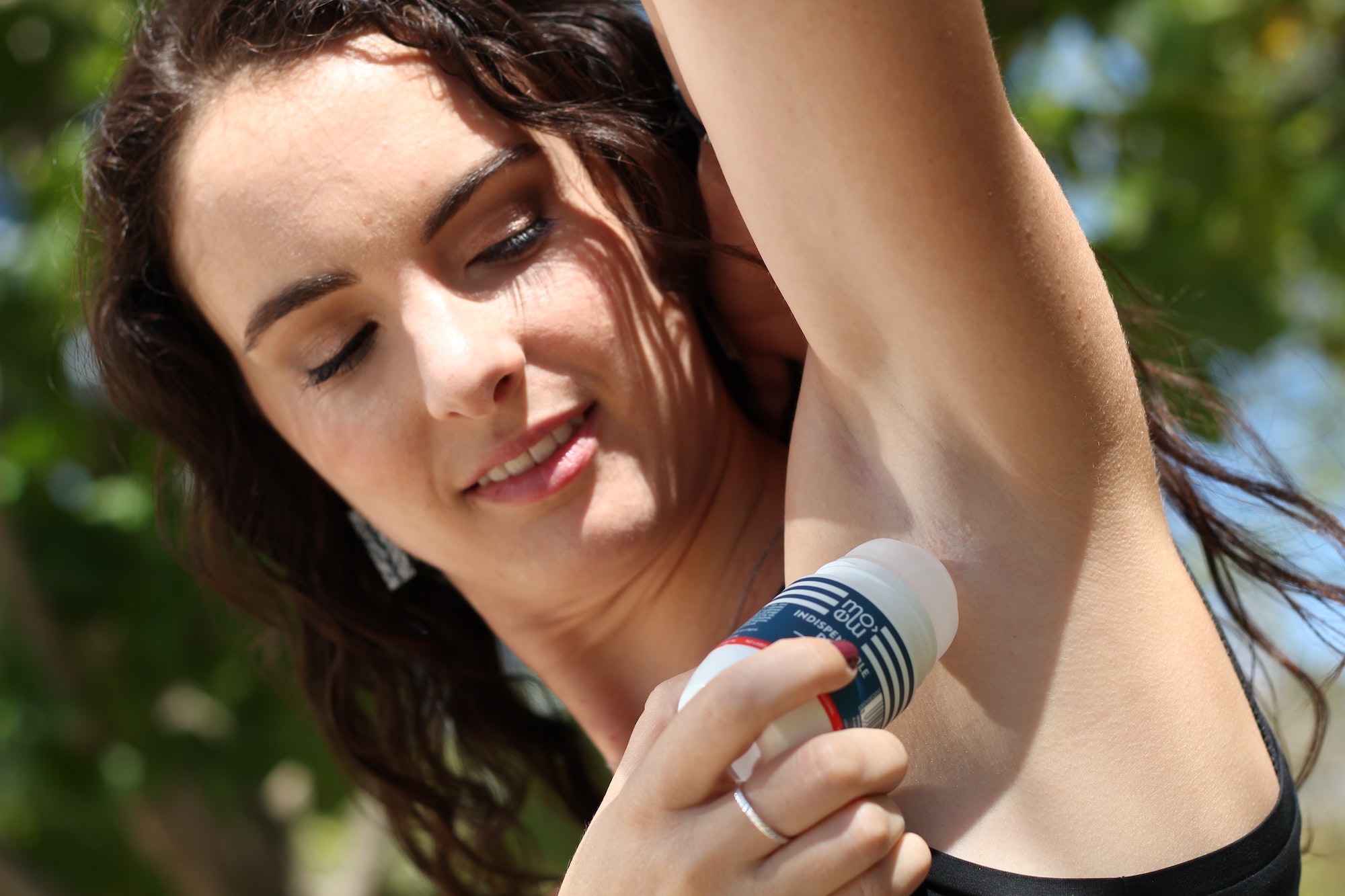 Health & Physiology
Health & Physiology
Aluminium in antiperspirants: an effective tool or a breast cancer threat?

Aluminium is the most abundant metal in Earth's crust. Due to its abundance and to its remarkable physical and chemical properties - it is lightweight, durable, and resistant to corrosion - aluminium is widely present in many different industrial products, including sunscreens, lipsticks, toothpastes, anti-acid drugs, food additives and vaccines. As a salt, aluminium is used as an extremely efficient antiperspirant. The precise reasons for this property are not know, but are thought to involve physical obstruction of sweat ducts.
Aluminium's wide presence in industrial products could lead to the assumption that it is a safe material. However, surprisingly little is known about aluminium's distribution and removal from the body after its absorption. Studies appeared in recent years (1, 2 and references therein) have shown that aluminium accumulates in organs such as the mammary gland and the brain. The reason for this accumulation is not known, since aluminium is not an essential element and has no known biological function.
Whereas it is now generally accepted that aluminium is toxic for the brain (2, and references therein), with Alzheimer disease being one of its potential toxic effects, at the time we started our experiments, little was known about the role that aluminium could have in in breast cancer development.
The hypothesis that aluminium might induce or contribute to breast cancer was first put forward by British researcher Philippa Darbre (3). She built her hypothesis on the following main elements. First, the reported increased incidence of breast cancer in Western societies during the last few decades. Second, the concomitant change in the localization of breast cancer, that arises now more frequently in the external part of the mammary gland, close to the axilla, where antiperspirants are applied on a daily basis. Third, the high levels of aluminium found in the human mammary gland. Fourth, the high content of aluminium present in the large majority of commercially available antiperspirants. Fifth, the capacity of aluminium to cross the human and mouse skin.
Biology is an experimental science, where hypotheses must be confirmed, or infirmed, experimentally. In our experiments, we used human or mouse epithelial cells (the cells of the mammary gland that produce and transport milk and which breast cancer arises from). These cells can be "cultivated" in the laboratory and either analyzed in vitro or injected into appropriate mouse strains to observe their behavior within a living organism. As a matter of fact, these experimental models have been key players in building the knowledge of biology, physiology and oncology of the last 30 years.
In our experiments, we exposed cultures of mammary epithelial cells for several weeks to concentrations of aluminium in the range of those measured in the human mammary gland. Remarkably, those cells became "transformed". That is, they exhibit functional changes typical of the process where normal cells become cancerous. Such changes include the accumulation of mutations in their DNA, and the capacity to overcome the proliferations' limits of normal cells. Furthermore, these aluminium-exposed cells, when injected into the flank of mouse strains validated for research in oncology, formed tumors and metastases, whereas controls cells (cells which have not been treated with aluminium) did not.
These effects are typical of well-known carcinogens. Whereas additional research is necessary to formally conclude that aluminium is a breast carcinogen, our results demonstrate that it is far from being biologically inert. They considerably strengthen the hypothesis that aluminium might contribute to breast cancer and perhaps to other human cancers.
1. Darbre PD. Aluminium and the human breast. Morphologie. 2016, 100(329):65-74. 2. Mirza A, King A, Troakes C, Exley C. Aluminium in brain tissue in familial Alzheimer's disease. J Trace Elem Med Biol. 2017, 40:30-36. 3. Darbre PD. Underarm cosmetics are a cause of breast cancer. Eur J Cancer Prev. 2001, 10(5):389-93.
Original Article:
Mandriota S, Tenan M, Ferrari P, Sappino A. Aluminium chloride promotes tumorigenesis and metastasis in normal murine mammary gland epithelial cells. International Journal of Cancer. 2016;139(12):2781-2790. doi:10.1002/ijc.30393.Next read: How early-life adversity gets under the skin by Joanne Ryan
Edited by:
Massimo Caine , Founder and Director
We thought you might like
Fighting back antibiotic resistance: a new hope from the soil
Feb 24, 2016 in Microbiology | 4 min read by Dan KramerThe colour beige: heating up the fat
Apr 1, 2016 in Health & Physiology | 3.5 min read by Caterina Da RèOne run a day keeps the...cancer away!
May 5, 2016 in Health & Physiology | 3.5 min read by Per thor Straten , Manja IdornSERINC5: a blood cell guardian against HIV
May 13, 2016 in Health & Physiology | 3.5 min read by Massimo PizzatoMore from Health & Physiology
Tobacco smoking and other exposures shut off cancer-fighting genes
Aug 31, 2024 in Health & Physiology | 3 min read by Jüri Reimand , Nina AdlerA hidden clock that times cytoplasmic divisions
Aug 30, 2024 in Health & Physiology | 3 min read by Cindy OwWhen two kinases go for a dance
Aug 2, 2024 in Health & Physiology | 4 min read by Ioannis Galdadas , Francesco Luigi Gervasio , Pauline JuyouxAwakening the thymus to cure SARS-CoV-2 infection: a matter of genes
Jul 27, 2024 in Health & Physiology | 3.5 min read by Stefano Marullo , Cheynier RemiKeeping the balance: How epigenetics monitors cancer genes
May 13, 2024 in Health & Physiology | 4 min read by Zach Gray , Madison Honer , Johnathan WhetstineEditor's picks
Trending now
Popular topics


